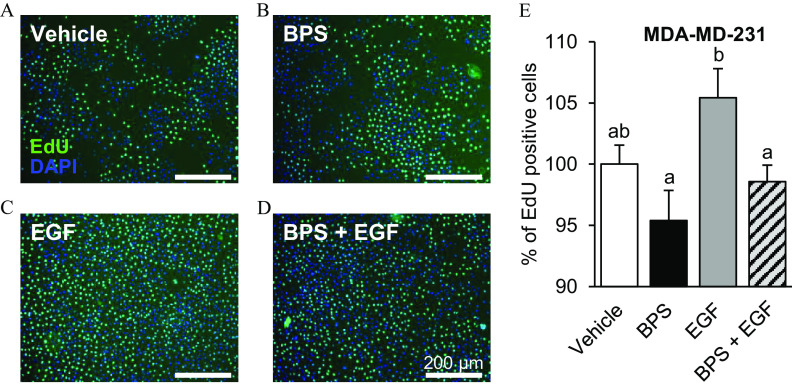Figure 8.
Effect of BPS exposure on the proliferation of MDA-MD-231 cells. (A–D) Representative images of MDA-MD-231 cells exposed to 5-ethynyl-2′-deoxyuridine (EdU; ) for 3 h (EdU-positive, green). Nuclei were stained with DAPI (blue) following 72-h exposure to vehicle (0.1% DMSO) (A); BPS () (B); EGF () (C); or (D) (same doses as single groups). (E) Cell proliferation () was expressed as the percentage of EdU-positive cells of the total number of nuclei and normalized to the vehicle group. . A generalized linear model was used to compare treatments. Different letters denote statistical differences among treatment groups at . Note: BPS, bisphenol S; DAPI, 4′,6-diamidino-2-phenylindole; DMSO, dimethyl sulfoxide; EGF, epidermal growth factor; SEM, standard error of the mean.

